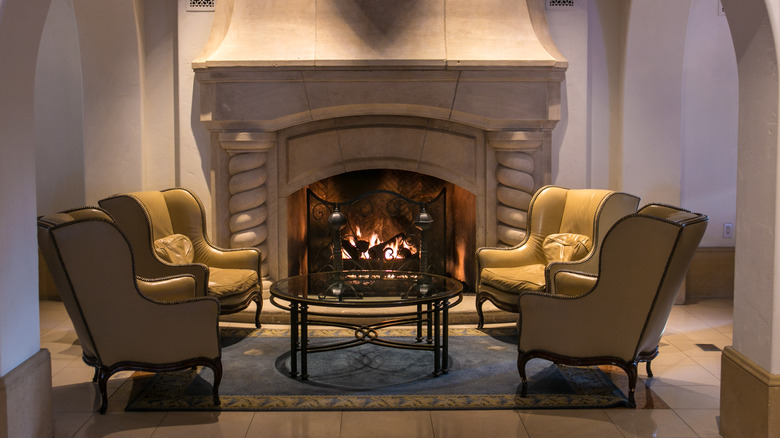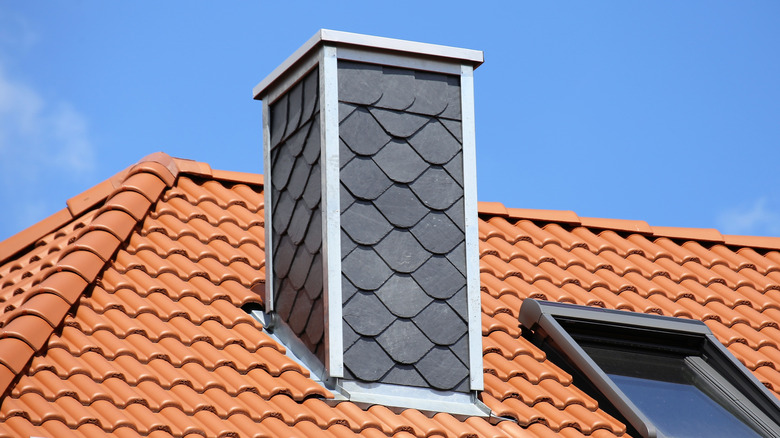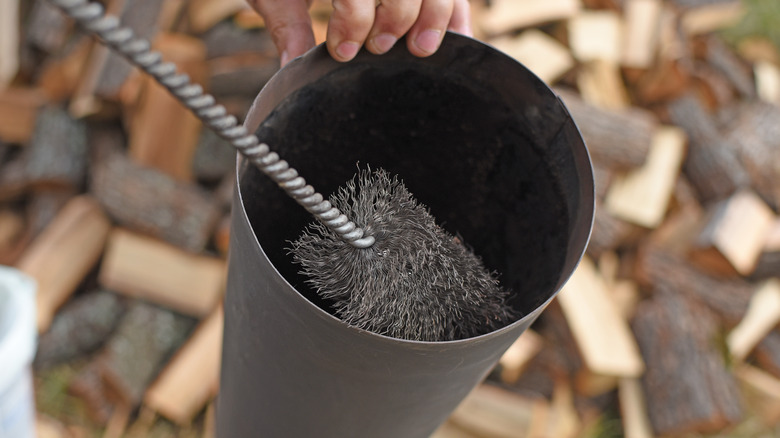Why You May Need A New Chimney Liner
Are you hoping to use your open fireplace this winter, perhaps to keep your energy bills lower and create a warm, toasty space for your family? Before you bring in the wood and start building a fire, you need to know it's safe to do so, which means having an annual inspection of the entire structure, according to the Chimney Safety Institute of America. That inspection is a must, whether you use the fireplace regularly or not, and it may come with some hidden surprises — not just from the animals that built a nest in it, either!
In some situations, you may learn the fireplace needs cleaning to remove creosote buildup. Other times, this inspection may reveal issues regarding the structural integrity and the overall condition of the fireplace, and that could mean the need for a new chimney liner. What are they, and why would your fireplace need one?
What is a chimney liner?
The interior of the chimney is called a flue, and it runs from the fireplace in your home up and out the top of the house. The flue is usually made of ceramic, metal conduit, or sometimes clay, according to Best Chimney Services. A chimney liner sits within the flue and is designed to contain the wood fumes (or whatever else you are burning,) and works to move particles to the top of the chimney to escape away from the home.
The liner helps to protect the structure of the chimney, which is typically made of concrete or stone, protecting it from both heat and the buildup of carbon on the interior walls. Most often, you will not notice the liner and not have to do much with it until it starts to deteriorate, and that requires closer attention from a chimney pro. If there is structural damage to the chimney itself because no liner existed, one may need to be added. Any breakdown of this structure creates a risk to the overall stability and safety of using the fireplace, especially if cracks develop along the interior or the bricks become loose.
There are benefits of a liner
Chimney liners are a core component of the system and work to create a safer environment for your family by preventing overheating of the actual masonry and joints that line the structure, according to Rockford Chimney Supply. They have other benefits, too. With a liner in place, there's less heat loss, allowing for improved efficiency of the fire, and it reduces the risk of the wood and other flammable components within the chimney structure from catching on fire.
It may also help make it easier for you to maintain the fireplace because cleaning it is much easier than trying to remove buildup from cement. There's less risk of the buildup of creosote within the liner, especially if it's newer, and that may mean less smoke and debris in your home when you use your fireplace. If your fireplace inspection reveals the need for structural improvements, don't put those off because it could mean it's unsafe for you to use your fireplace this year, and all you'll be able to do is decorate the mantel instead.


